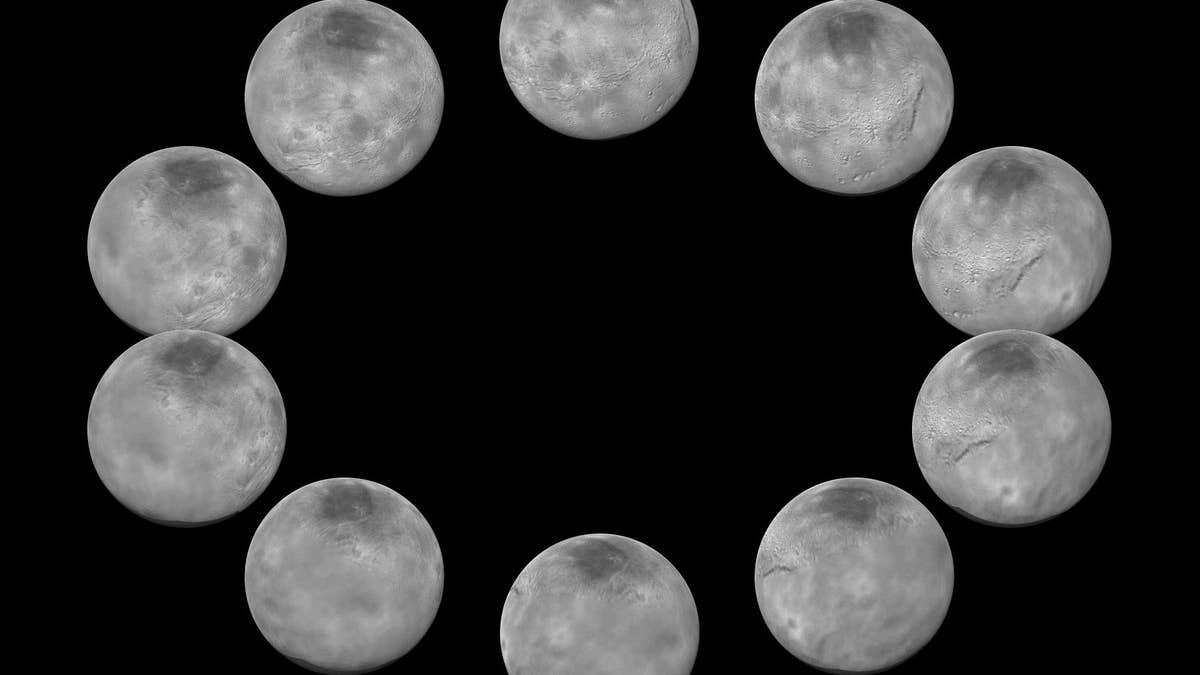
In July 2015, the cameras on NASA's New Horizons spacecraft captured Pluto rotating over the course of a full "Pluto day." The best available images of each side of Pluto taken during approach have been combined to create this view of a full rotation. ( NASA/Johns Hopkins University Applied Physics Laboratory/Southwest Research Institute)
Ever wonder what a day on Pluto looks like?
Well, NASA has the answer. Thanks to images captured by the New Horizon probe, we can see Pluto rotating over the course of a full “Pluto day,” which equates to 6.4 Earth days.
The images were taken by the Long Range Reconnaissance Imager (LORRI) and the Ralph/Multispectral Visible Imaging Camera as the distance between New Horizons and Pluto decreased from 5 million miles on July 7 to 400,000 miles on July 13. The more distant images contribute to the view at the 3 o’clock position, with the top of the heart-shaped, informally named Tombaugh Regio slipping out of view, giving way to the side of Pluto that was facing away from New Horizons during closest approach on July 14.
Related: NASA releases first Pluto flyby images
Among other things, these images reveal the differences between the encounter hemisphere and the so-called “far side” hemisphere seen only at lower resolution. Dimples in the bottom (south) edge of Pluto’s disk are artifacts of the way the images were combined to create these composites.
In a similar set of images, New Horizons also caught a day in the life of Charon – the largest of Pluto’s five moons. It also rotates once every 6.4 Earth days.

In July 2015, New Horizons captured images of the largest of Pluto's five moons, Charon, rotating over the course of a full day. The best currently available images of each side of Charon taken during approach have been combined to create this view of a full rotation of the moon. (NASA/Johns Hopkins University Applied Physics Laboratory/Southwest Research Institute)
The photos were taken by LORRI and Ralph/MVIC from July 7-13, as New Horizons closed in over a range of 6.4 million miles. The more distant images contribute to the view at the 9 o’clock position, with few of the signature surface features visible, such as the cratered uplands, canyons, or rolling plains of the informally named Vulcan Planum.
Related: NASA spacecraft discovers blue sky, red ice on Pluto
These images show how similar looking the encounter hemisphere is to the so-called “far side” hemisphere seen only at low resolution -- which is the opposite of the situation at Pluto. Dimples in the bottom (south) edge of Charon’s disk are artifacts of the way the New Horizons images were combined to create these composites.



















